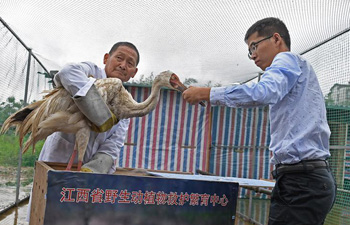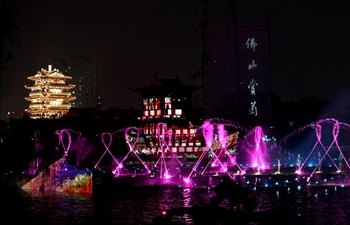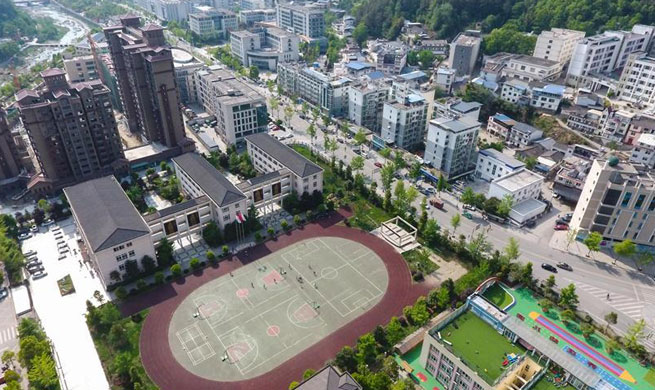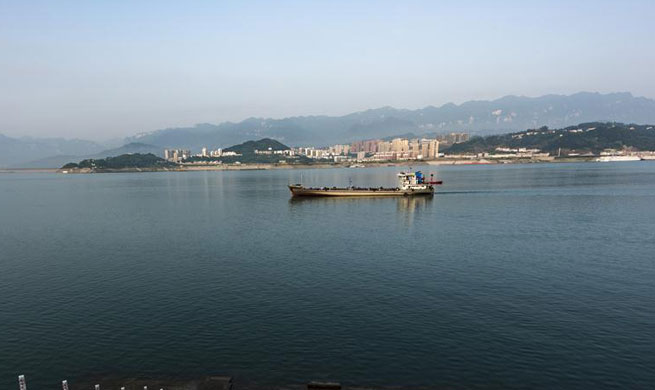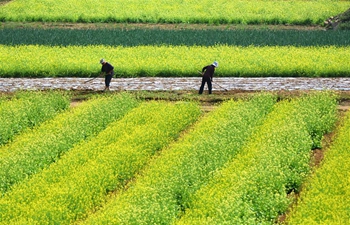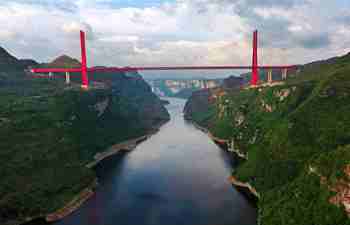ADDIS ABABA, May 8 (Xinhua) -- For Tedela Chala, a supermarket worker in Addis Ababa, going to work is no longer the nightmare it used to be in the past, when traffic jams were an integral part of the chaotic city.
"(Now) it takes only 10 minutes to reach my workplace," the 37-year-old said, describing his fast, cheap and reliable commute on the light railway, the first in sub-Saharan Africa.
Today, the four million residents of the capital rely on the Addis Ababa Light Rail, the 475-million-U.S.-dollar project built with Chinese technology and currently operated by Chinese experts. The Export-Import Bank of China provided 85 percent of the funding.
The light rail and another Chinese-built transport project, the Ethiopia-Djibouti Standard Gauge Rail, are flagship infrastructure projects representing the socioeconomic importance of Chinese engagements in one of Africa's fastest-growing economies.
The two railways also showcase the transformation of Ethiopia's infrastructure, eventually providing convenient transportation all the way to its neighboring Djibouti.
Chala says the light rail has brought convenience to his work and life. "I am lucky to have this modern transportation today," he said. "I am very proud and lucky."
The 34.25-km light railway, with 39 stations across the city, was built by China Railway Engineering Corporation, which currently operates it together with the Shenzhen Metro Group, another Chinese company.
Beginning operation two years ago, the light rail currently serves an average 101,000 passengers daily, with the number sometimes leaping to 185,000.
The Ethiopia-Djibouti Standard Gauge Rail is providing both passenger and freight transportation between Ethiopia and Red Sea nation Djibouti.
WINGS FOR LANDLOCKED ETHIOPIA
Ethiopia, a landlocked country, heavily relies on the seaports of Djibouti with 95 percent of its import and export commodities presently transported via the Port of Djibouti.
Abebe Tola, a carpet trader in Addis Ababa, regularly purchases blankets in Dire Dawa, a city about 510 km from the capital where quality blankets are available at affordable prices.
Transportation difficulties are now a thing of the past, Tola said, referring to the Ethiopia-Djibouti railway starting commercial freight and passenger services in January this year. The service is also substantially cheaper.
Since the railway became operational, Tola brings dozens of blankets back to Addis Ababa by train. It costs him only 616 ETB (22.4 dollars) for a two-way ride, whereas a flight could have set him back by minimum 130 dollars.
The 752-km transnational railway, East Africa's first electrified railway, is also expected to ease congestion at the long-serving Port of Djibouti as well as expand Ethiopia's exports and international trading.
According to Hu Shaode, deputy chief financial officer of Djibouti Port Co., the congestion at the port is easing as containers can be transported to Ethiopia via the railway in less than 10 hours.
Jointly constructed and operated by two Chinese companies -- the state-owned China Railway Group Ltd. and China Civil Engineering Construction Corp. -- the railway has transported some 30,000 passengers and more than 11,000 containers of various types in its four months of operations.
As Ethiopia ambitiously strives to become the hub of Africa's light manufacturing industries with a lower-middle income status by 2025, the government is also building an economic belt along the railway. The industrial parks built in the belt will be an economic game changer for Ethiopia, turning the railway into a development corridor.





